7 fascinating “Chinese” practices that actually began in Malaysia!

- 7.6KShares
- Facebook7.3K
- Twitter43
- LinkedIn26
- Email69
- WhatsApp207
[This article was originally published in 2015.]
So, it’s the Chinese New Year season. It’s the time when Malaysian Chinese will get to enjoy all things Chinese like ang pows, lion dances, mandarin oranges, lou sang and other such good stuff.
But did you know that a lot of the Chinese cultural practices we have in Malaysia are actually more “Malaysian” than “Chinese”? Yup. Some of the stuff Chinese folks do here are gonna make Chinese folks everywhere else go “Dude, dat ain’t from us!”
Here are seven (yup, we’ve updated!) examples of Malaysian Chinese practices that were either created in Malaysia, or are really big deals here but will leave Chinese folks in other parts of the world scratching their heads like a dandruff shampoo ad.
1. Lou Hei Yee Sang is actually… Made in Malaysia!

Tossing yee sang (and shouting out good wishes) during Chinese New Year is so normal for Malaysians, it wouldn’t feel like CNY without it. But this practice is almost unheard of in Hong Kong, Taiwan, China or even other Chinese communities around the world.
The practice of eating thin slices of raw fish with veges was pretty common in ancient China. UPDATE: Eating raw fish or meat was pretty common in ancient China. Over time however, this practice died out except for a few areas in Southern China (mainly Fujian and Guangdong). Eating Yee Sang during the CNY season is a Cantonese tradition. Fishermen would prepare Yee Sang on the seventh day of the Chinese New Year, or Ren Ri (mankind’s birthday). This tradition was brought to Malaya by Chinese immigrants, where it was mainly practiced in central Peninsular Malaysia. But as the Chinese became more concerned about health risks of eating raw fish, this practise was on the decline and was in danger of dying out as well.
Modern yee sang, on the other hand, is a purely Malaysian creation. It is very different from its original version, including the ingredients used, how the food is served and of course, all that shouting.
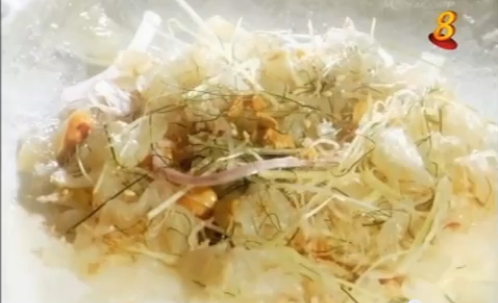
Singapore tried to “copyright” modern Yee Sang as its own creation, citing 4 chefs who claimed to have invented the dish in 1964 for their newly-opened Lai Wah restaurant. Then, a woman in KL claimed that modern yee sang was created in the 1920s or 30s by her uncle, Chef Tham Mui Kai, who was then still a kitchen apprentice at Yok Woo Hin restaurant in KL’s Petaling Street. (But a Singaporean blogger did a pretty kickass job of debunking that claim.)
But the most viable claim is probably by Loke Ching Kee Fatt (the grandfather of Rasah member of parliament Anthony Loke). Loke had been serving platters of CNY yee sang to Seremban folks way back in the 1940’s. The street in front of his shop would be filled with tables and the locals would have a giant yee sang banquet.
(UPDATED) Loke’s children and grandchildren who helped out during the are still around today and they remember the hard work that went into preparing the banquets. Loke’s son revealed that his father’s original yee sang recipe had over 30 ingredients! There were also a few varieties, using fruits, fish skin and different types of vegetables.
The family also produced a book recently, chronicling Yee Sang’s fascinating journey from ancient China to modern Malaysia and the role Loke Ching Fatt played in making it into the cultural phenomenon it is today.
2. We turned ‘Chingay’ into a multi-cultural giant flag parade.
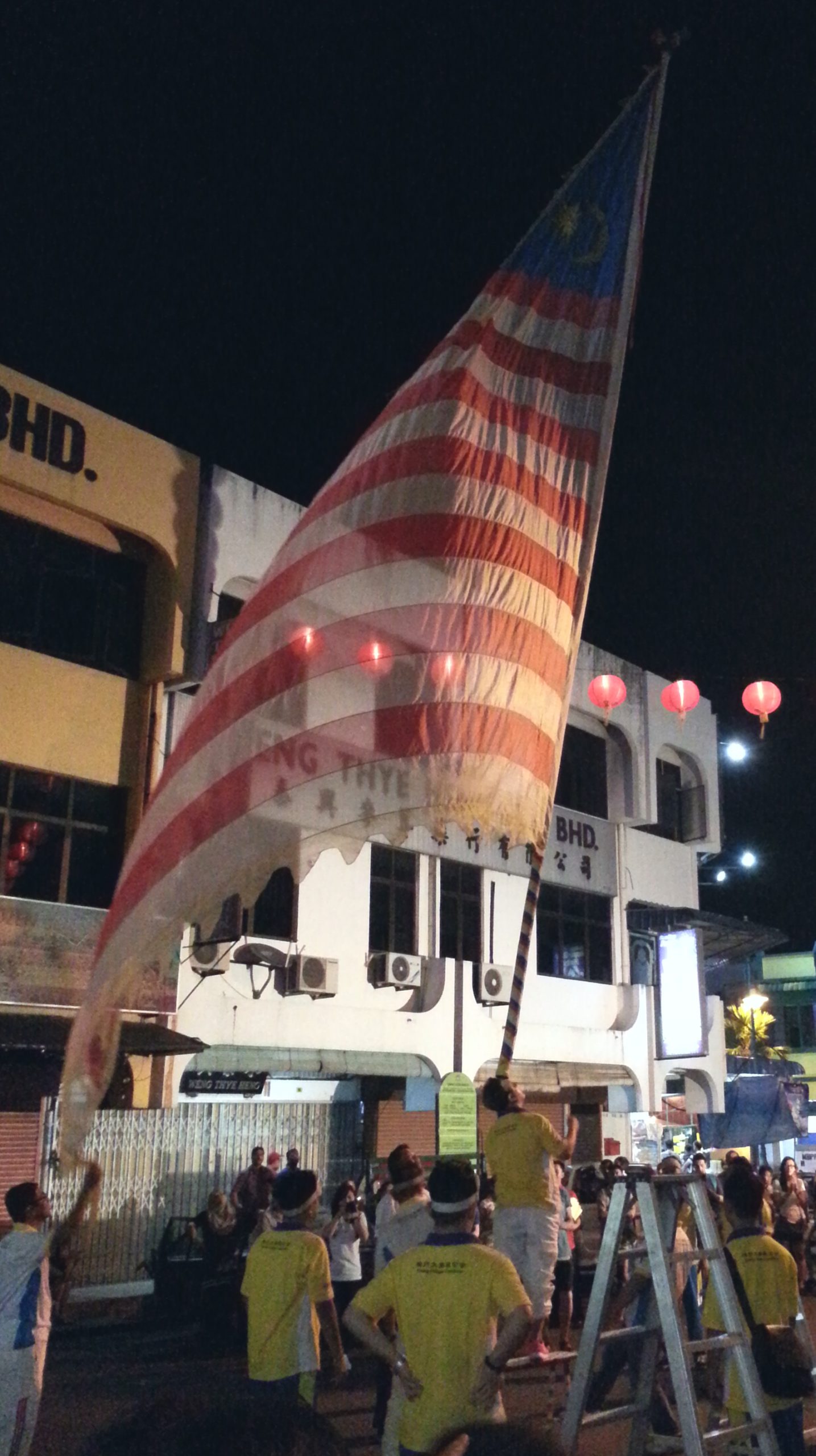
Say “Chingay!” and chances are the first thing you think of is a big Chinese celebration, with colourful processions and the most awesome balancing act in the world using epic flags.
Chingay was brought over to Malaya by Hokkien immigrants. It was originally a Taoist festival to worship Chinese deities such as Tua Pek Kong and Guan Yin, or to celebrate important festivals like the Chinese New Year. It was an important religious affair, with Chinese gods being paraded in decorated floats.
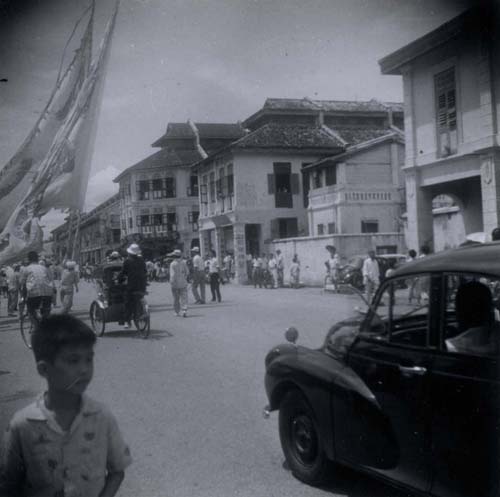
As the Chinese prospered here, the parades became more and more grand. With devotees donating more and more money, more acts (and more elaborate acts) were able to be added to the celebrations.
Over time, the focus of Chingay has also shifted. Today, Chingay has just about completely moved away from its religious roots. It has evolved to become a uniquely Malaysian cultural event (more like a street carnival, in fact) where people of all races take part in. Chinese deities are almost a forgotten footnote in Chingay’s history, as stunts with the giant triangular flags has now become the highlight of Chingay parades.
Traditionally, these 30-foot flags (weighing about 27kg) would be balanced on their foreheads, chins, hands, feet and any other part of the body. They would then be tossed around between team mates as the procession moved along. As if that wasn’t awesome enough, performers have developed more ways to perform these stunts.
These days, performers have gone all “extreme” – throwing, catching and balancing the 3-story high flags on the head, chin, or hands and butt, while perched on a BMX bike, on ladders or even on other people!
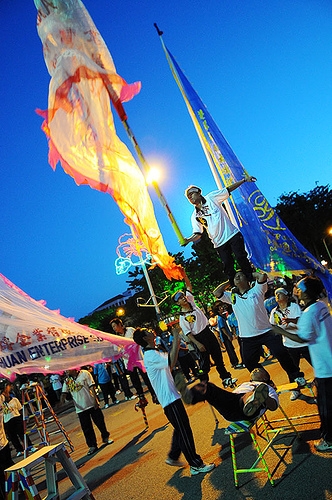
But even though it’s a really big deal in Malaysia, Chingay as we celebrate it here is virtually unknown to Chinese communities in other parts of the world! *
* Except for Singapore. Actually like this one: back in 1906, all the Chinese clan associations there decided to ban Chingay processions (they all confirm plus chop that they would never, ever, ever do it again). But then in 1973, Singapore decided to steal Penang’s version of Chingay because they didn’t know how to celebrate CNY anymore after they banned fireworks. (Really, never bluff you one! Don’t believe, click this link and read yourself!)
3. Penang lang actually created a Chinese god!
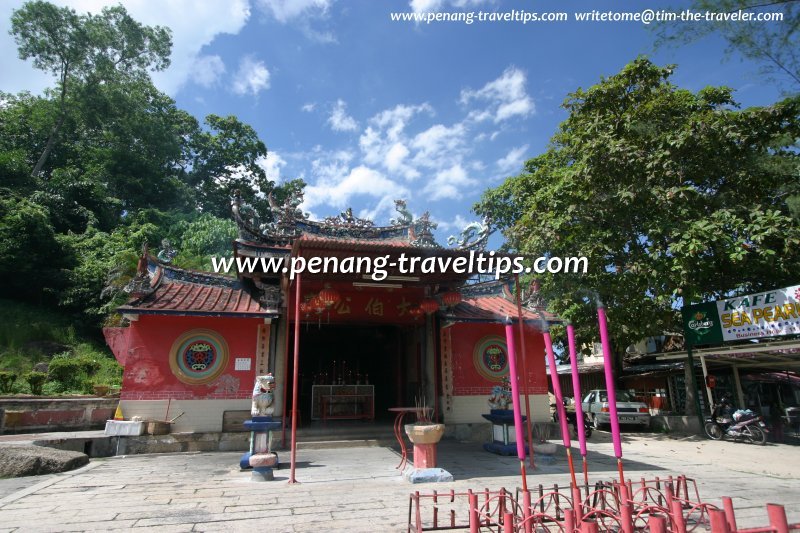
Hah? God can “create” one meh? Something like that la… Here’s what happened.
UPDATE: Tua Pek Gong is actually a generic title given to benevolent guardian spirits worshiped by the Chinese in Southeast Asia. These gods started out as mortal men who contributed greatly to the local community and were later deified upon their deaths. Tua Pek Gong are some of the most a popular Chinese gods, worshiped by Malaysian Chinese throughout the country.
In Malaysia, we have a Tua Pek Gong that comes from Penang.
Tua Pek Gong was originally a Chinese scholar named Zhang Li. The story goes that in 1746, Zhang Li was travelling across the ocean from China to Indonesia in a boat, together with 50 other passengers.
A huge storm blew the boat way off-course to Penang island, where they were shipwrecked. All hope of travelling to their original destination were sunk (haha, “sunk”, geddit?). So the 50 passengers were forced to settle in Penang, at a place they called “hai zhu” (or Sea Pearl – Penang-kia, does this sound familiar yet?). This was 40 years before Francis Light discovered came to the Pearl of the Orient and founded a colony there.

There were very few educated people on board the boat. So it was up to Zhang Li and his two friends, Qiu Zhao-Jin and Ma Fu-Chun, to lead the colony. They taught the folks how to build houses and farm the land. Zhang Li also had medical knowledge, and he would collect herbs to treat the people’s illnesses.
Under the leadership of the three friends, the colony flourished and the people prospered.

After the death of the three friends, the local Chinese began worshiping them. They were given the title of Tua Pek Gong (meaning Great-Grand Uncle) in hopes that they would continue watching over the community. (UPDATE: This is actually not an uncommon Chinese religious practice and totally in line with Chinese folk religion.)
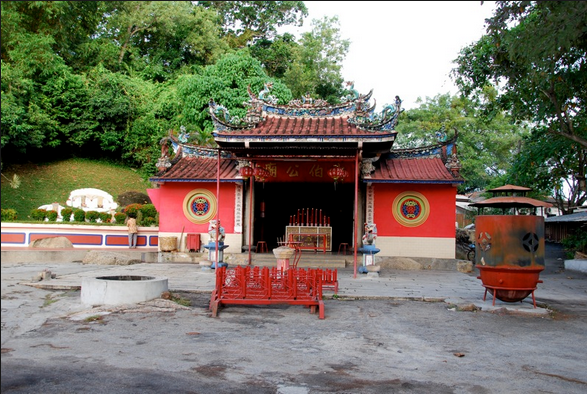
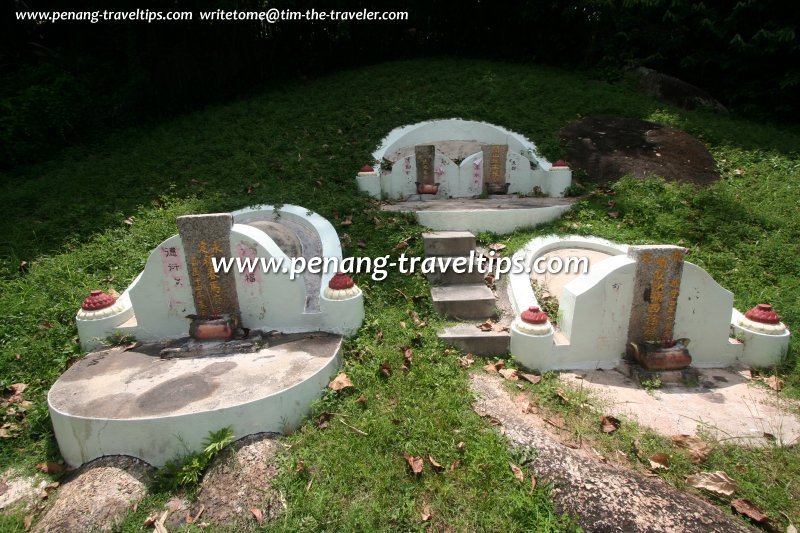
Speaking of Chinese gods from Malaysia…
4. Datuk Gong is also a Malaysian Chinese god – in fact, he’s Malay!
You’ve probably noticed the small, red-coloured (or sometimes yellow-coloured) shrines by the roadside or under a tree. These are shrines of gods that the local Chinese call Na Tuk Kong (or Datuk Gong). They are among the most popular Chinese gods in Malaysia.
Eh, wait…how did a Chinese god get the Malay title of “Datuk” leh?
Now we know what you’re thinking:
“Shah Rukh Khan and Jackie Chan got datukship, we already scratch head. But Chinese gods also can get meh?!”
In actual fact, Datuk Gong is not your regular Chinese deity. There is no Datuk Gong among the regular Chinese pantheon of gods. That’s because the other name for the Datuk Gong is “Datuk Keramat”. These gods have a Malay name because most of them are actually Malay spirits! There are some Chinese, Indian, Siamese and even Orang Asli Datuk Gong, but take a look into these altars and most likely you will find a figure in traditional Malay dress.
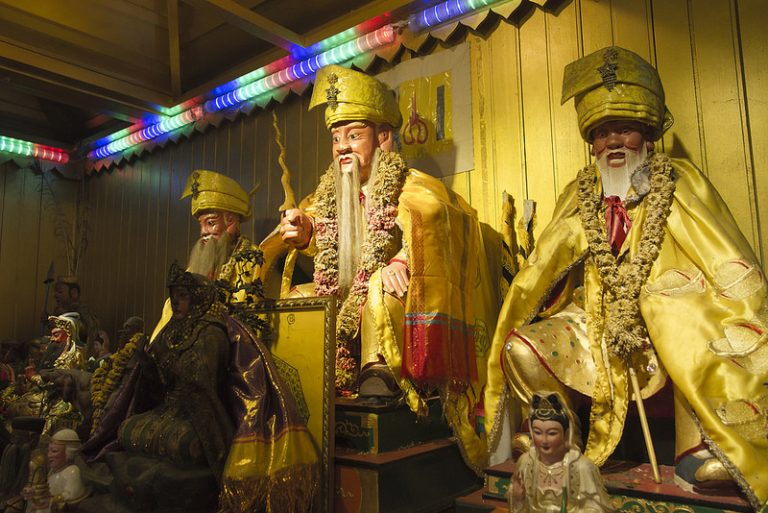
See, before the arrival of Islam, Malay culture practised the worship of “penunggu”, or spirits, who lived in natural formations such as rocks, trees or nests. These were the guardian spirits of the land. This spirit worship was later expanded to include any person who had done good deeds and contributed to prosperity of the community. When these people died, their spirits were worshipped as Datuk Keramat, in hopes that they would continue blessing the people. Some of these Datuk Gong can still be traced back to actual historical figures. UPDATE: You might even see the name of the original personality engraved in its altar!
(Check out the above trailer for a Malaysian-made documentary about Datuk Gong. It’s a good summary of what Datuk Gong is all about.)
(UPDATED) The third and fourth waves of Chinese immigration to Malaya saw hundreds of thousands of Chinese arriving in the late 19th and early 20th centuries. They brought with them their folk religions and discovered that the Chinese concepts of Confucianist ancestor worship and Tu Di Gong worship closely resembled the Malay worship of Datuk Keramat and the “penunggu”. So, being pragmatic people, the Chinese merged both practices, and began worshipping the local Datuk spirits to seek blessings in the land where they had settled.
As Islam became prominent in Malay culture, Datuk Keramat worship among the Malays died out. But Datuk Gong worship had taken root in Malaysian Chinese spiritual beliefs. Although it is commonly practised in Malaysia, Singapore and parts of Indonesia, Datuk Gong worship is virtually unknown to other Chinese communities around the world.
5. Pole dancing by lions? That’s us!

No, the lion dance dudes don’t wear skimpy bikinis and wiggle their booty. But the performances they give are no less heart-pumping! The lion dance originated in ancient China, and is still a very popular cultural performance in Chinese communities all over the world.
But the modern lion pole dance? That is purely, and proudly, a Malaysian invention! The story goes like this: back in 1983, competitive Lion Dancing began in Malaysia. Lion dance troupes were judged based on the traditional Choy Cheng performance – plucking a green vegetable from a high place. At that time, lion dance performers stacked up wooden tables and large ceramic flower pots to get to their goal.
Then along came the Hing Tung Lok lion dance association. They looked at the tables and stuff, and thought, “Yawn, this is as exciting as Night Shyamalan’s The Last Airbender.” (OK, we’re paraphrasing). So they decided to kick it up a notch. The troupe invented the first set of poles, called “Plum Blossom Poles”. At the time it was a set of five wooden posts just 33 inches high.
Their pole dancing routine took the lion dance world by storm. Lion dance troupes across the nation began adopting this new form, creating their own pole formations with varying heights. Some daredevil troupes even dance on poles that are several stories high! Of course, all this is done without safety equipment to make the performances more interesting!

As the new art form flourished in Malaysia, lion pole dancing began to spread throughout Asia. In 1992, the Malaysian Lion and Dragon Dance Federation joined with other Lion and Dragon Dance Federations overseas to form the International Lion and Dragon Dance Federation. Lion Dance competition rules were standardized, and pole dancing lions became the norm around the world.
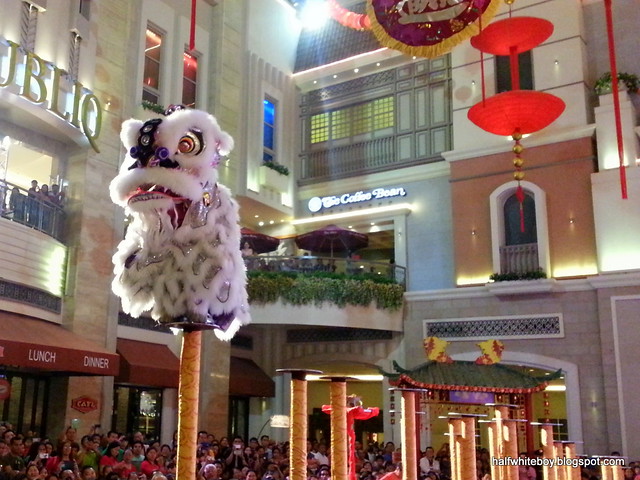
Today, lion pole dancing competitions and performances are held all over the world. And it’s all thanks to the creativity of the guys at Hing Tung Lok lion dance association.
6. Penang kias started throwing oranges on Chap Goh Mei!
Yup, it actually began in Penang. And for those who didn’t know, Chap Goh Mei is often called the Chinese Valentine’s Day because it is connected with the tradition of eligible girls throwing mandarin oranges into rivers in hopes of landing a boyfriend or husband.
This tradition can be traced back to Hokkien superstitious rituals during the 19th century. Those days, young ladies would throw oranges into the sea or river in hopes that they would catch good husbands. They believed that the man who picked up their orange would be their fated match.

But orange-throwing on Chap Goh Mei only became a really big thing in Penang and the Klang Valley. It’s not popular in the rest of the Chinese world.
Today, orange-throwing has evolved into a fun event for young and available folks.
Singles would gather at rivers or lakes to toss mandarin oranges with their names and contact numbers on them. It’s a fun way to meet new people. Competitions would also be held where the oranges thrown into the sea by girls would be scooped up by boys in boats.
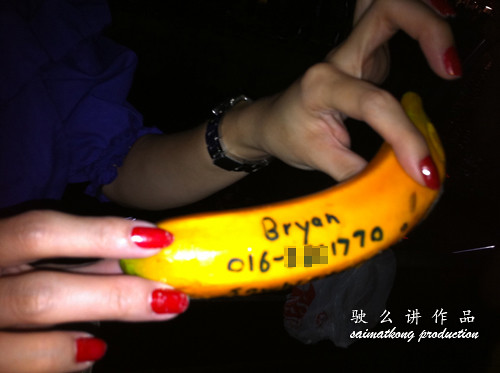
7. (NEW!) Seremban people also created a Chinese god!
Thanks a million to our reader, Noel Leong, for pointing this out to us!
Another Chinese god created in Malaysia is Xian Shiye. The worship of Xian Shiye began around the 1860s with the deification of Sheng Ming Li, a Chinese leader in Sungei Ujong (or Seremban, as it is known today).
Sheng was born in 1823 in Guangdong province. He migrated to Melaka in 1851 when he was 28, and soon after that moved to Sungei Ujong. Sheng quickly built up a reputation for his business flair, helping the company he was working for reap fantastic profits in the tin mining business. He was also known as an upright guy who who had nerves of steel and was an outstanding leader. Not surprisingly, he won the respect of the local Chinese community and was soon made a Kapitan Cina.

Unfortunately, the competition for tin mining rights often resulted in bloody conflicts. One of the earliest was in 1860 when two Malay chieftains battled over the ownership of tin mines and the rights to collect taxes. The Chinese settlers were divided into two groups, backing their respective Malay chiefs. Sheng and his followers supported Datoh Klana against his rival, Dato Shahbandar.
Sheng’s group was defeated and Sheng himself was killed in Rasah. He was only 38. His remains were brought back to Melaka and quietly buried by one of his loyal followers, Yap Ah Loy. That’s the same guy who pioneered modern Kuala Lumpur, in case you were wondering.

Almost immediately after his death, Sheng was elevated as the guardian deity for Chinese miners. He was given the title of Xian Shiye (literally “immortal counsellor”, a status more revered than Datuk Gong). Worship of Xian Shiye then began in Sungei Ujong. But Xian Shiye worship really took off when Yap Ah Loy moved to KL and later became the Kapitan there.
Immediately after arriving in KL, Yap found himself in the middle of the Selangor civil war that raged between 1867 and 1873. Apparently under the guidance of Xian Shiye, Yap Ah Loy won many important battles and finally restored order in KL. Yap Ah Loy’s victories confirmed the power of Xian Shiye and helped popularize the deity.
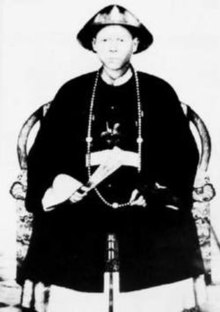
To honour his old benefactor, Yap Ah Loy built the Xian Shiye temple where it still stands in Jalan Tun H.S. Lee, KL. This is the second oldest temple in honour of Xian Shiye. The oldest is in Rasah, built merely a year after Sheng’s death. Xian Shiye temples can also be found in Selangor, Melaka and Pahang.

– —————- –
So there you go, folks. Some of the things that many young folks think are traditions handed down since ancient times were actually only created not so long ago. Who knows what these and other Malaysian Chinese traditions may evolve into in our children’s or even grand-children’s time?
A Chingay flag-balancing physics game, maybe?
But we’re already seeing the further evolution of some of these traditions. Gone are traditional Ang Pow designs, featuring auspices symbols. These days, ang pows come in all kinds of designs, and may not even come in the traditional red colour.
And the lion dance continues to evolve. Check out these lion dance videos:
What do you think of these developments? Yay or nay?
Whatever the case may be and however culture may evolve, here’s a Chinese wish from ancient times that we can all agree with.
Gong Xi Fa Cai!
- 7.6KShares
- Facebook7.3K
- Twitter43
- LinkedIn26
- Email69
- WhatsApp207



